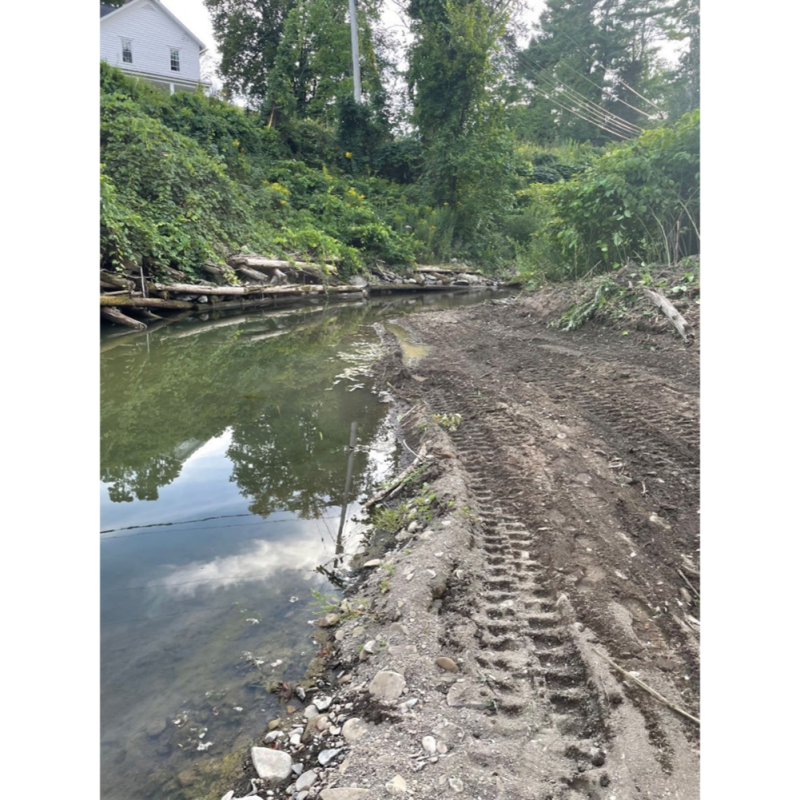17th Year of the Amphibian Migrations and Road Crossings Project in the Hudson Valley NY
- Go Explore NY

- Mar 18
- 4 min read
The New York State Department of Environmental Conservation (DEC) today announced that warmer temperatures and rain have spurred the start of annual migrations of vernal pool breeding amphibians line frogs and salamanders. Throughout the Hudson Valley, Amphibian Migrations and Road Crossings (AM&RC) Project volunteers are surveying roads to safeguard the continued movement of frogs and salamanders and reduce amphibian road mortality.
“Every year, DEC’s Amphibian Migrations and Road Crossings Project draws hundreds of volunteers to help protect salamanders and frogs on the move in the Hudson Valley, migrating from forests to vernal pools,” said DEC Acting Commissioner Amanda Lefton. “I thank the volunteers who come out to support this great program and encourage anyone traveling roads this time of year to be on the lookout for these vulnerable amphibians to help keep them safe.”
DEC's Hudson River Estuary Program and Cornell University initiated the AM&RC Project to raise awareness about critical amphibian habitat, engage volunteers to help collect data on the annual migration, and decrease amphibian road mortality. More than 1,000 volunteers have participated in the effort since 2009, helping to move an estimated 48,000 salamanders, frogs, and toads safely across roads. DEC supports programs like the AM&RC Project to connect New Yorkers to nature, educate people about the importance of wetlands and healthy, connected forests, and encourage proactive conservation planning to prevent habitat fragmentation. The program is critical for maintaining the state's rich diversity of plants and animals, and especially the vernal pool-breeding amphibians of conservation concern throughout the Northeast range.
In late winter and early spring, amphibian species like wood frog (Lithobates sylvatica), spotted salamander (Ambystoma maculatum), and Jefferson-blue spotted salamander complex (Ambystoma jeffersonianum x laterale) emerge from underground shelters in the forest and head to vernal pools for breeding. Vernal pools are small, temporary wetlands that serve as critical breeding habitat for these amphibians. The pools hold water until summer, so the adult amphibians must gather, breed, and deposit eggs early enough to ensure their aquatic young can hatch, grow, and leave the pools before they dry up. Due to their importance, vernal pools were added to DEC’s recently expanded freshwater wetlands protections.
The timing of migration is weather-dependent, with concentrated activity on the first rainy nights of the season when the ground is thawed and night air temperatures remain above 40 degrees Fahrenheit. The timing of migration varies throughout the Hudson River estuary watershed, but when weather conditions are just right, there can be explosive "big night" migrations with hundreds of amphibians on the move. On their journeys between forest habitat and breeding pools, these amphibians often need to cross roads, where mortality can be high even when traffic is low.
This year, the first pulse of migration was observed by AM&RC volunteers on March 5, a rainy night with an average evening temperature of 49 degrees. Volunteers surveyed roads from the Lower Hudson Valley to the Capital District and counted 1,600 amphibians, most of which were wood frogs and spring peepers. While volunteers were able to assist 800 amphibians safely across roads, more than 40 percent were found dead. On the next warm, rainy nights, DEC expects more salamander and frog species will be migrating.
AM&RC volunteers document road locations where they observe migrations in the Hudson Valley, record weather and traffic conditions, and identify and count amphibians on the move. Volunteers also carefully help the amphibians safely cross roads. Since the project started, volunteers have documented 20 species and counted more than 58,000 live amphibians and 24,000 migrating amphibians killed by passing vehicles. Species reported most frequently during migration nights include spotted salamander, wood frog, and spring peeper (Pseudacris crucifer). To a lesser degree, volunteers also observe Jefferson-blue spotted salamander complex and four-toed salamander (Hemidactylium scutatum), two species of conservation concern in New York.
Safety is paramount, and project volunteers are advised to take all necessary precautions. Volunteers are strongly encouraged to wear reflective safety vests and headlamps to increase visibility on dark roads and not interfere with passing vehicles. Amphibian safety is also important, and frogs and salamanders should be handled carefully with clean, wet hands, free of hand sanitizer, lotion, and other substances that can be toxic to amphibians' porous skin.
With such a large geographic area to cover, the AM&RC Project benefits greatly from the support of local partners who assist with coordinating volunteers in their communities. This year, partners include Climate Smart Rhinebeck, Columbia Land Conservancy, Hudson Highlands Land Trust, Hudson Taconic Lands, Saw Kill Watershed Community, Teatown Lake Reservation, Town of Ancram Conservation Advisory Council, Town of Bedford Conservation Board, Town of Gallatin Conservation Advisory Council, Town of Lloyd Environmental Conservation Council, Town of Pound Ridge Conservation Board, Vassar College, and Wallkill Valley Land Trust.
For more information, including a short video about amphibian migrations, visit DEC's website. Photos of recent migration of vernal pool amphibians in Albany County are available on DEC's Flickr page. DEC held in-person and virtual trainings for volunteers in February with 164 participants. New Yorkers interested in volunteering to participate in this annual event are encouraged to watch a series of training videos on YouTube and read the Volunteer Handbook (PDF). In addition, potential volunteers can access a recording of the training and use materials available on the project website to learn more. Anyone interested in receiving project updates and news about the migration can subscribe to the project e-newsletter through DEC Delivers.
Project volunteers are encouraged to use the hashtag #amphibianmigrationhv in social media posts.


%20(2).png)















Comments